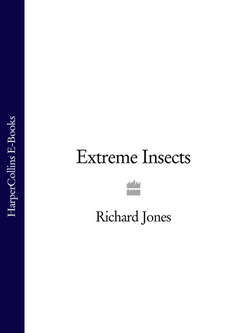Читать книгу Extreme Insects - Richard Jones - Страница 12
Slimiest insect
Оглавление| NAME | fungus gnat larvae in the family Keroplatidae |
| LOCATION | worldwide |
| ATTRIBUTE | create mucus webs to collect their food |
Contrary to popular opinion, insects (like snakes) are not slimy. Slime or, to give it its more technical term, mucus, is a sticky secretion used especially by molluscs and vertebrates. Snails and slugs use it to lubricate their path as they glide forwards on their own moist layer, and to a certain extent as a defence, since the stickiness deters predators, which can get gummed up in it. Vertebrates use it to line their airways, guts and genital tract, and to cover their eyes, where it forms a gel layer in which antiseptic enzymes can protect against microbial attack. Mucus is a very sticky substance, and very useful, so it will come as no surprise to learn that some insects use it after all.
Mucus is made up of mucin molecules – a number of long protein chains covered with atomic groups which resemble sugar molecules. The sugar parts (glycans) attract water (and each other) and as the long mucin molecules slide past one another, these areas act like weak glue, partly sticking the strands together. The mucus remains wet and tacky, and does not set hard like that other important long-chain protein molecule, silk, which is produced from the salivary glands of many insect larvae, which use it to spin a cocoon in which to become adult.
Fungus gnat larvae produce mucus from their salivary glands, but they do this throughout their larvahood, not just during metamorphosis at the end. The larvae of these small midge-like flies live under dead logs, fungal fruiting bodies or in caves. Here they build a rough sheet web of sticky mucus strands, covered all over in tiny water droplets. Sometimes they add a soft flexible tube into which they retreat for shelter. Many species eat highly nutritious fungal spores. The spores are impossible to catch when airborne but are caught in the gleaming mucus, and can then be eaten. The webs of some species also contain oxalic acid, a simple chemical similar to vinegar but much more powerful. It is highly toxic to many animals (including humans), and the gnat larvae use it to kill insect prey, which they then eat too.
